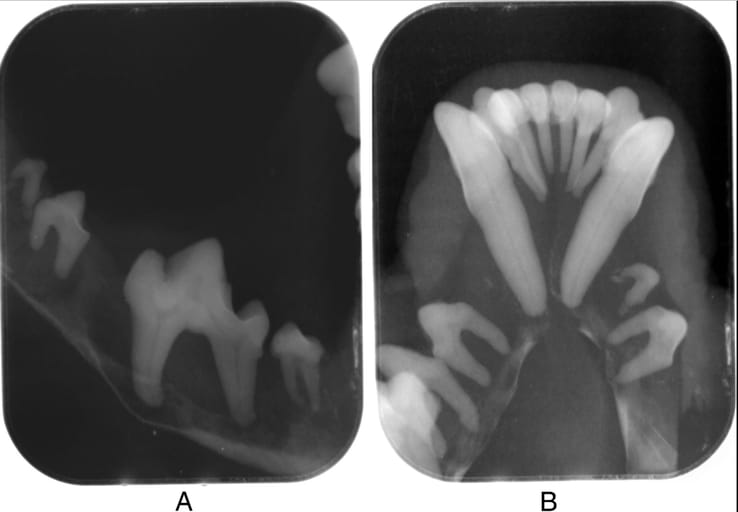- Veterinary View Box
- Posts
- Severe Bone Loss in Dogs: A Case Study on Renal Osteodystrophy
Severe Bone Loss in Dogs: A Case Study on Renal Osteodystrophy
Journal of Veterinary Dentistry 2025
Erez Cohen-Mivtach
Background
Renal osteodystrophy is a complication of chronic kidney disease (CKD) caused by secondary hyperparathyroidism, leading to bone resorption and deformities. This condition primarily affects young dogs with CKD, although it can occur in dogs of any age. The study presents two cases of renal osteodystrophy in canine patients, highlighting diagnostic challenges, clinical manifestations, and treatment approaches.
Methods
Two canine cases were analyzed, each presenting with oral abnormalities and symptoms suggestive of CKD. Physical examinations, blood tests, urinalysis, and radiographic imaging were conducted to assess bone loss and renal function. Post-mortem histological analysis was performed to confirm CKD-related structural kidney changes.
Results
Both dogs exhibited severe oral symptoms, including mobile teeth, halitosis, and mandibular pliability, with radiographs revealing extensive bone resorption in the mandibles and maxillae. Laboratory tests confirmed severe azotemia, hyperphosphatemia, and anemia, consistent with CKD. Despite medical management, both patients deteriorated and were euthanized within two to three months of diagnosis. Histological findings confirmed chronic kidney disease with interstitial fibrosis, glomerular abnormalities, and tubular degeneration.
Limitations
Blood samples for parathyroid hormone (PTH) and vitamin D levels were not measured due to financial constraints, limiting the ability to fully characterize the biochemical contributors to renal osteodystrophy. Additionally, bone biopsies were not performed, which could have provided further histopathological confirmation of osteodystrophy-related changes.
Conclusions
Renal osteodystrophy is a severe and often fatal complication of CKD in dogs. Early detection of CKD through routine blood tests can help prevent or delay its progression. Comprehensive management, including dietary modifications and phosphate binders, is essential for slowing disease progression, but prognosis remains poor in advanced cases. This study underscores the importance of proactive screening for CKD to mitigate the risk of renal osteodystrophy in canine patients.

Case 2. Intraoral radiographs showing severe osteopenia, loss of lamina dura, interradicular and interdental bone, thin mandibular cortex with no uniform density. (A) Lateral left first molar and mandible. (B) Ventrodorsal view of rostral mandible.
How did we do? |
Disclaimer: The summary generated in this email was created by an AI large language model. Therefore errors may occur. Reading the article is the best way to understand the scholarly work. The figure presented here remains the property of the publisher or author and subject to the applicable copyright agreement. It is reproduced here as an educational work. If you have any questions or concerns about the work presented here, reply to this email.